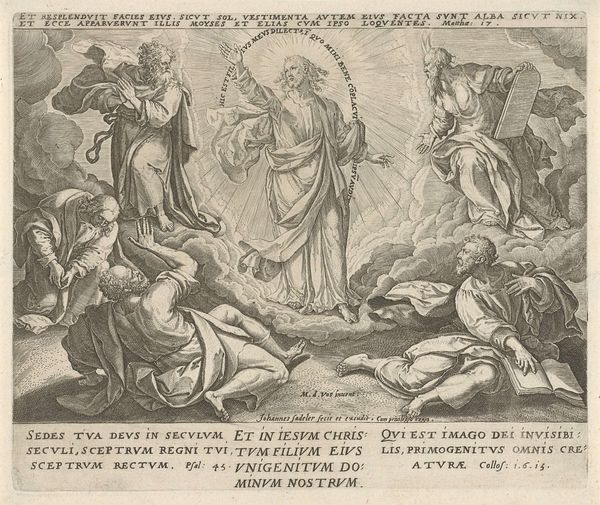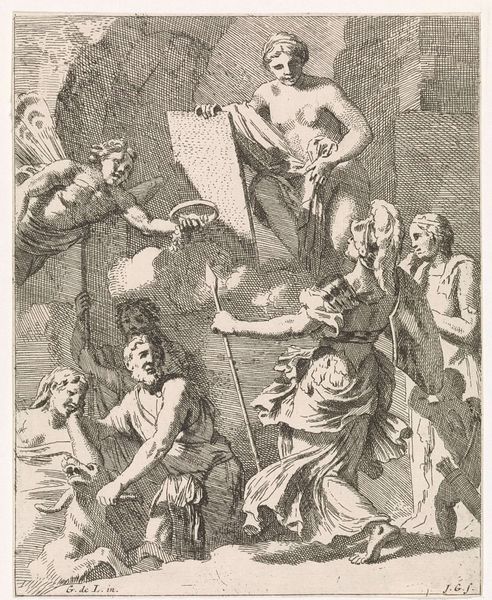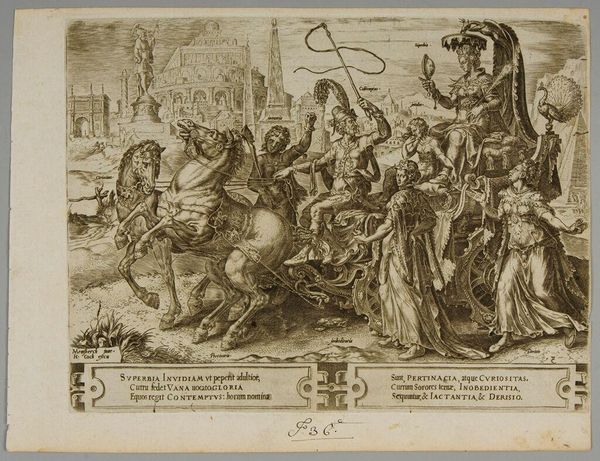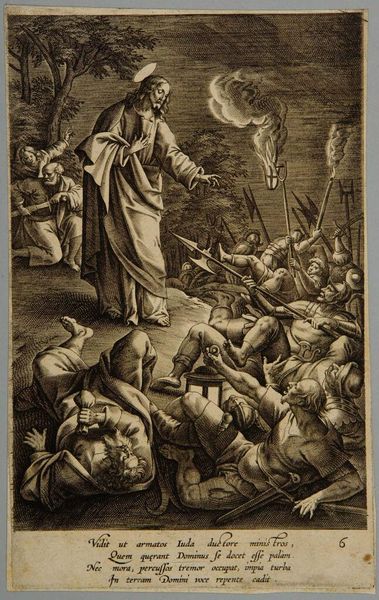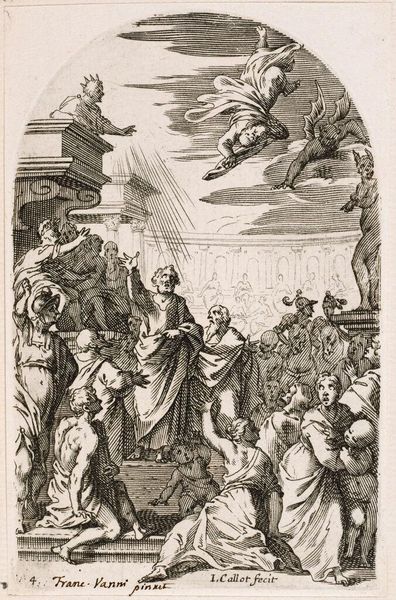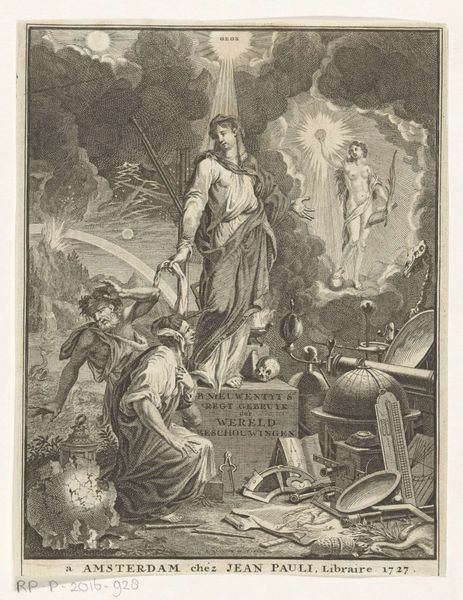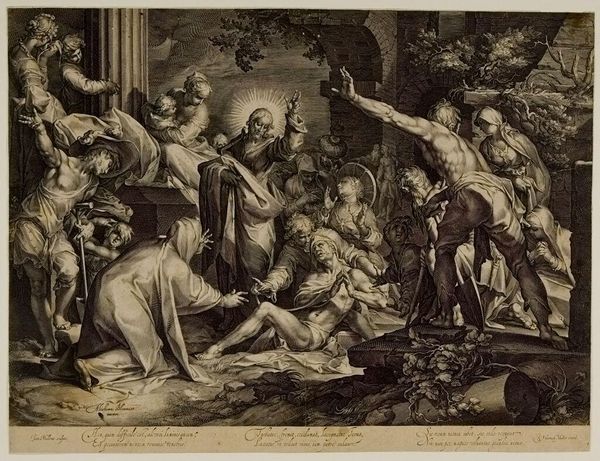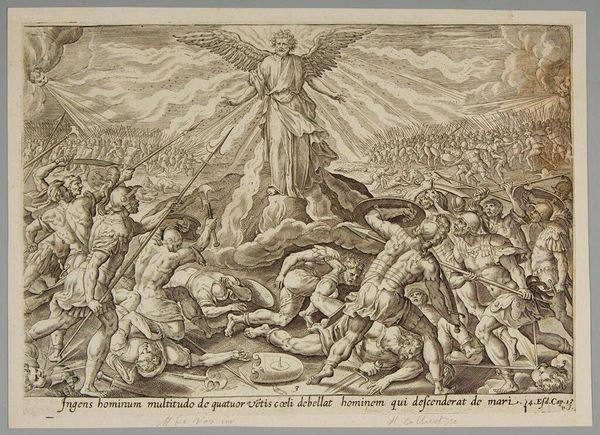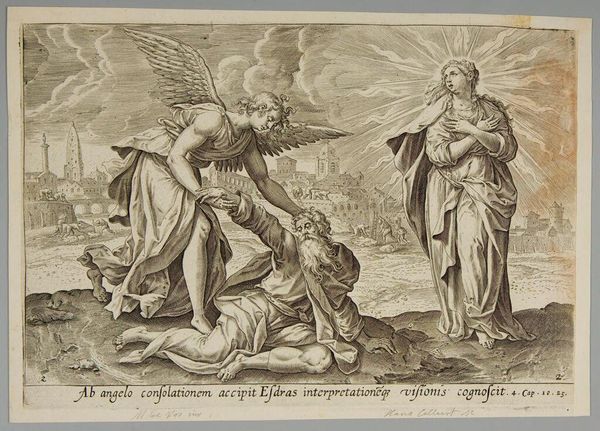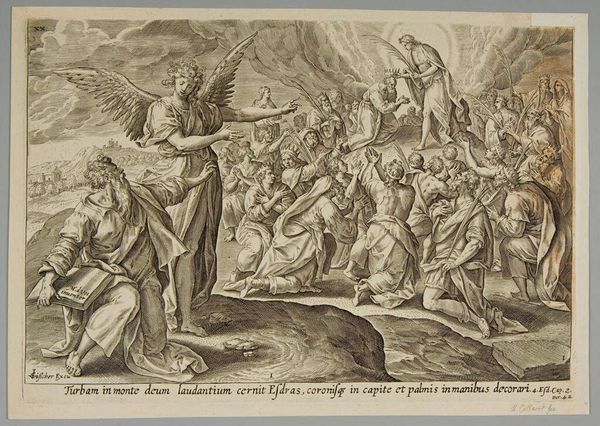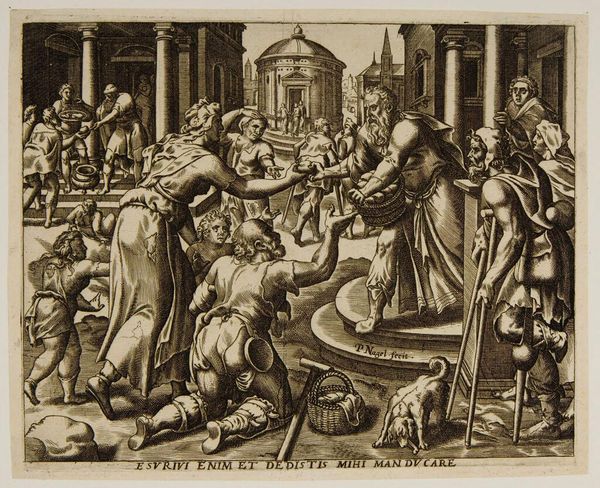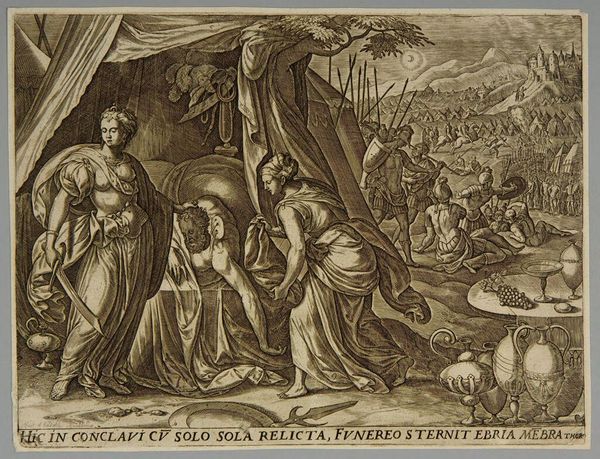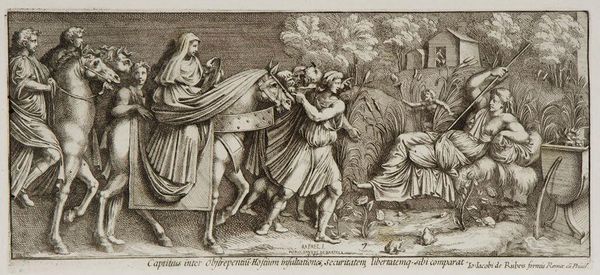
Copyright: CC0 1.0
Editor: This is Johann Sadeler’s “Transfiguration,” made around 1600. The expressions are so dramatic! What’s striking to you about how Sadeler uses symbolism in this piece? Curator: Consider the radiant light emanating from Christ, bathing the scene. It's not merely illumination, but a symbolic representation of divine revelation. Doesn't it evoke a sense of overwhelming power? Editor: It does. And the figures of Moses and Elijah, flanking Christ—what’s their significance? Curator: They embody the Law and the Prophets, the foundations of the Old Testament, now converging in the figure of Christ. Think of them as cultural anchors. It's fascinating how Sadeler uses their presence to bridge historical and spiritual narratives. Editor: I hadn’t thought about them as anchors before. I’m beginning to see how deeply this work is embedded in cultural memory. Curator: Precisely! The visual language speaks volumes about the continuity of faith and the power of symbolic representation across generations.
Comments
No comments
Be the first to comment and join the conversation on the ultimate creative platform.
